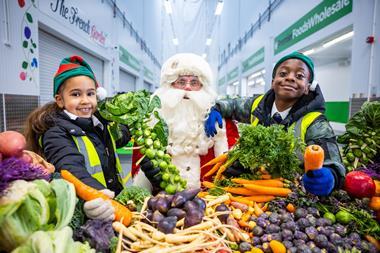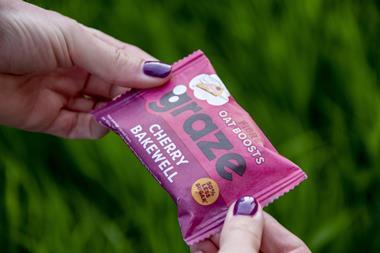A Christmas present from Ireland to the British multiples?
Cheaper beef from an unexpected source is among possible good news for buyers as the market settles down after the fuel protest disruption, although currency instability and renewed media coverage of BSE are potentially troublesome.
National average cattle prices have lost several pence since the blockades were lifted. This market downturn has prompted continuing rumours of the processors' and multiples' precautionary stockbuilding during the crisis now proving to have been rather too successful.
However, there seems to be a genuine seasonal supply improvement behind the easier prices, although nothing dramatic is yet visible in MAFF's slaughter estimates. Its latest available kill figures are still just slightly higher than a year ago, in line with the most recent MLC forecast.
It is now almost certain there is no avalanche of cheap dairy bulls. On the other hand, some earlier claims by producers of an impending shortage of prime cattle can be seen as alarmist. By mid week the average British liveweight price was comfortably below 90p per kg (though of course higher in Scotland) but a little firmer than 12 months ago.
The surprising development is in Ireland, where the export abattoirs are attracting unexpectedly large numbers of steers. Prices have been forced lower as buyers exploit the unfamiliar opportunity to choose between plentiful beasts coming off the grass.
This casts some doubt on suggestions the shrinking Irish herd and torrent of live exports could make the Republic's processors confident sellers of restricted volumes into the British pre-Christmas market. However, the currency market tension between the US dollar and euro, together with cuts in export subsidies, might affect the Irish suppliers' third country business and indirectly influence the market tone in Britain.
{{MEAT }}
Close menu
- Home
- Retail & Wholesale
-
Products & Suppliers
- Back to parent navigation item
- Products & Suppliers
-
Product Categories:
- Back to parent navigation item
- Product Categories:
- Alcoholic drinks
- Bakery
- Cereals & breakfast
- Cheese
- Chicken & poultry
- Chocolate
- Confectionery
- Crisps, nuts & snacks
- Dairy
- Fish
- Fresh produce
- Frozen
- Household
- Meat
- Own Label
- Sauces & condiments
- Seasonal
- Soft drinks
- Vaping
- Vegan & plant-based
- World foods
- Suppliers
- People
- Reports & Data
-
Topics A-Z
- Back to parent navigation item
- Topics A-Z
-
Popular topics:
- Back to parent navigation item
- Popular topics:
- Cost of living crisis
- Crime
- Deposit Return Schemes
- Finance
- Government & Regulation
- Health
- Inflation
- Loyalty
- Marketing
- Mergers & Acquisitions
- New Product Development
- Sourcing
- Supply chain
- Sustainability & environment
- Technology
- Ultra Processed Foods
- Vaping
- A-Z all topics
- Content by type:
- Events
- Ask iA (beta)
- Subscribe now
Sign in to comment on this article
Not logged in before? Register for FREE guest access today.
You will be able to:
- Read more stories
- Receive daily newsletters
- Comment on stories
Advert



















No comments yet